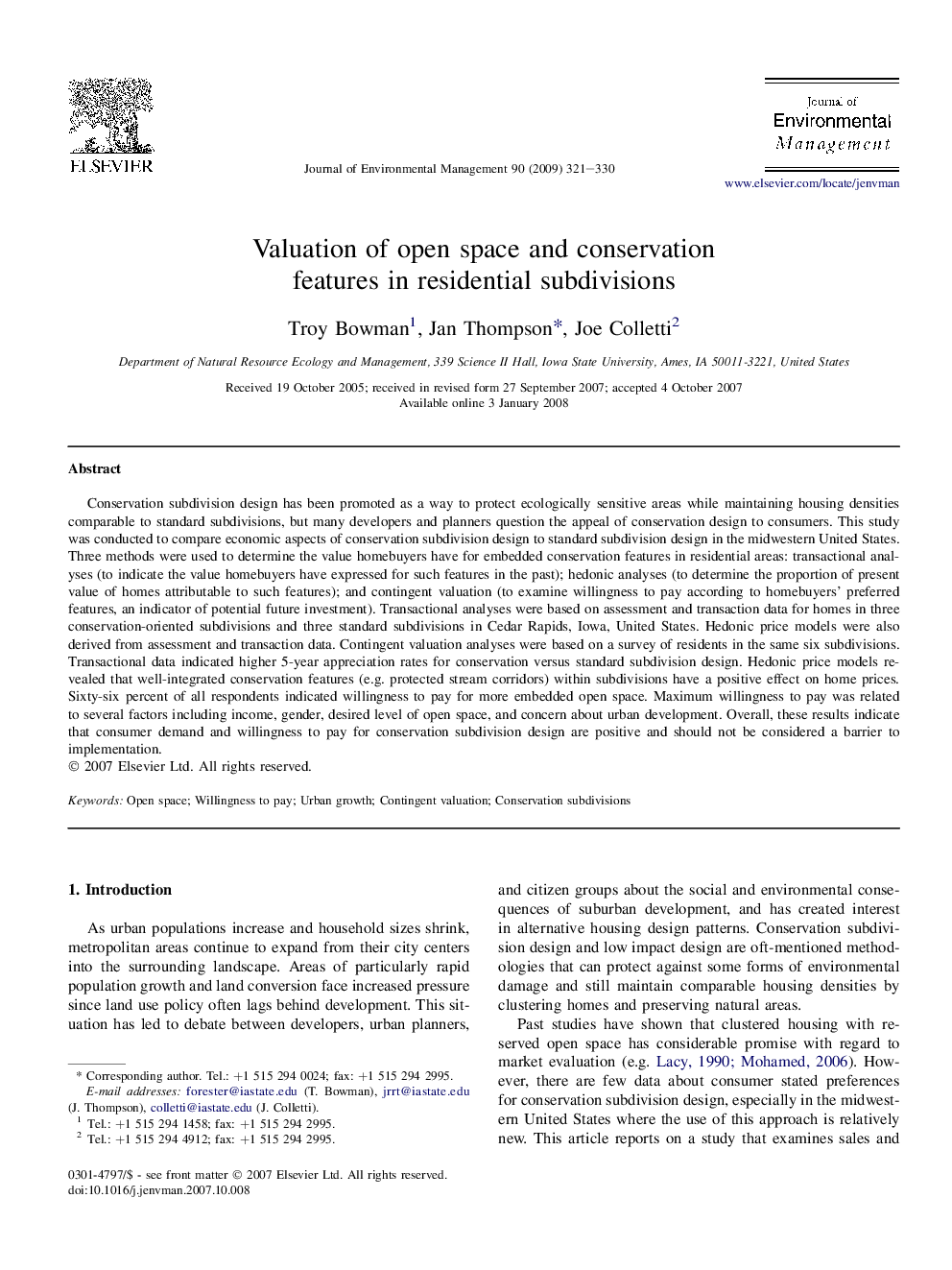| Article ID | Journal | Published Year | Pages | File Type |
|---|---|---|---|---|
| 1058098 | Journal of Environmental Management | 2009 | 10 Pages |
Conservation subdivision design has been promoted as a way to protect ecologically sensitive areas while maintaining housing densities comparable to standard subdivisions, but many developers and planners question the appeal of conservation design to consumers. This study was conducted to compare economic aspects of conservation subdivision design to standard subdivision design in the midwestern United States. Three methods were used to determine the value homebuyers have for embedded conservation features in residential areas: transactional analyses (to indicate the value homebuyers have expressed for such features in the past); hedonic analyses (to determine the proportion of present value of homes attributable to such features); and contingent valuation (to examine willingness to pay according to homebuyers' preferred features, an indicator of potential future investment). Transactional analyses were based on assessment and transaction data for homes in three conservation-oriented subdivisions and three standard subdivisions in Cedar Rapids, Iowa, United States. Hedonic price models were also derived from assessment and transaction data. Contingent valuation analyses were based on a survey of residents in the same six subdivisions. Transactional data indicated higher 5-year appreciation rates for conservation versus standard subdivision design. Hedonic price models revealed that well-integrated conservation features (e.g. protected stream corridors) within subdivisions have a positive effect on home prices. Sixty-six percent of all respondents indicated willingness to pay for more embedded open space. Maximum willingness to pay was related to several factors including income, gender, desired level of open space, and concern about urban development. Overall, these results indicate that consumer demand and willingness to pay for conservation subdivision design are positive and should not be considered a barrier to implementation.
